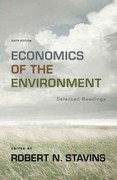Higher-Education Exporting and International Competitiveness Higher education in the United States has been the envy of the world for decades. For years, more foreign students have received their college and university education in the U.S. than in any other country. Even considering the additional out-of-state and out-of-country costs, foreign students nd American education much more valuable than their home-country options. This has direct and indirect benets for America. In particular, what many people might not realize is that every time a foreign student spends money to purchase education at a U.S. institution, or to purchase other U.S. goods and services while residing in the country, that counts as a U.S. export. For its own citizens, the American education system has also produced a workforce that is always among the leaders in competitiveness, entrepreneurship, and innovation. This has resulted in the U.S. economy being the largest in the world since 1871. Yes, China has experienced exponential growth over the past few decades, but in nominal GDP, the U.S. is still far ahead. Perhaps that is why China sends so many students annually to participate in the U.S. education system. The duality of exporting higher education and developing the U.S. workforce to be internationally competitive is important for the country. In support, the U.S., unlike many other countries, has a specic International and Foreign Language Education (IFLE) oice within the U.S. Department of Education. IF LE's focus is on the country's international competitiveness. But how important is the American education export? The answer is that in 2018 some 1.1 million foreign students contributed $42 billion in export revenues to U.S. colleges and universities (e.g., tuition, fees, room and board). Foreign students made up 5.2 percent of all higher- education students in the country. Some 330,000 students came from China and 170,000 from India, but over the years, students have come from virtually all of the world's 260 countries and territories. The remaining countries combined hosted 3.5 million foreign students, with the United Kingdom (506,000), China (489,000), Australia (372,000), and Canada (370,000) in the top ve. For the United States, this means an education trade surplus of $34.2 billion because fewer U.S. students take part in studies Page 465 abroad (U.S. Bureau of Economic Analysis). The impact on the United States has been powerfulforeign students helped sustain 455,000 U.S. jobs in the 2018 (NAFSA). But the practical numbers are even more impressive. The value of the education exports alone ($42 billion) is almost double the revenue from America's top agricultural export, soybeans ($21.6 billion). However, when other student spending is factored in (e.g., about $10 billion for food, cars, clothes, and discretionary items), education's total export value rivals that of U.S. pharmaceuticals ($51 billion) and automobiles ($53.6 billion; although the auto sector contributes $159 billion in trade when suppliers and parts are included). U.S. higher education institutions, the vast majority of which are nonprot organizations, are major exporters. What is troublesome, though, is that many U.S. policymakers have little awareness or interest in education exports. Some say that education helps drive U.S. international competitiveness, but many politicians continue to explore nationalistic measures that would likely result in a signicant decline of foreign students in the United States. The beauty of the duality of exporting higher education and making the U.S. workforce more internationally competitive is that there is synergy between the two. Many universities have students from more than 100 countries on campus. Such a \"global campus fabric\" brings in education-export dollars and creates a dynamic global education environment that may itself help drive future exports in other industries. The United States will not be able to educate its workforce to be as internationally competitive without foreign students on campuses. And the country's trade balance would be worse off with a decline in foreign students. Yet, nationalistic tendencies, trade barriers, and political uncertainty appear to be the new normal (the United Kingdom is facing similar education uncertainty with Brexit). And that scares off potential education-export participants. Some 1.1 million students come to the United States each year, but only 332,000 Americans study abroad. While the United States is near its peak in foreign student enrollment, new student enrollment has dropped since 2016. This is a trend that spells trouble for U.S. higher education and the education-related trade balance. So, what happens when the current foreign-student enrollees graduate in the next couple of years? Are the country and its political leaders strategically planning for a solution? Or is that left to university administrators? The factors to overcome to stop the new foreign-student decline are not easy to tackle. Some of these include rising costs of U.S. higher education, but more importantly, student visa delays and denials, as well as a political environment that draws on nationalistic rhetoric, makes life riskier and more diicult for foreign students. The duality premise means that this foreign-student decline will likely also result in a decline in the country's international competitiveness. .1








